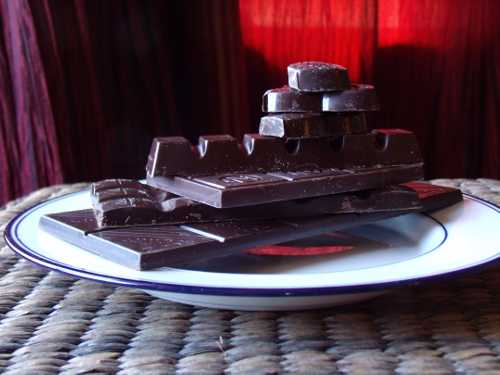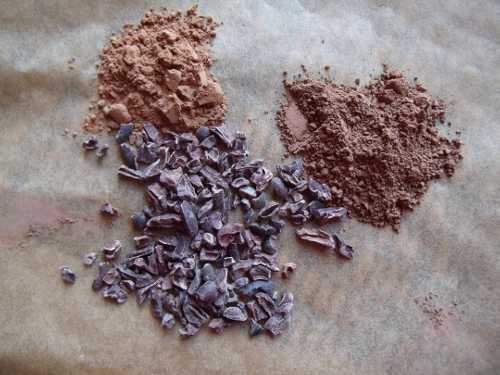
Chocolate.
Even the word evokes feelings of well being.
What better time than February to explore this tasty member of the vegetable kingdom? In just over a week, vast quantities of the confection will be distributed to loved ones in honor of Valentine’s Day, so let’s get the skinny on this rich treat.
Chocolate comes from a pineapple-sized, melon-like fruit that grows in the tropics on the cacao tree. The fruits are also known as pods, and each one holds about 40 cacao (also known as cocoa) beans.
The simple brown seeds that reside within the pods (cocoon-like, in a sweet, sticky white pulp) contain all the ingredients needed to make one of our most beloved food products, chocolate.
Chocolate has been used as a drink for thousands of years, perhaps dating as far back as 1400 B.C.
The Mayans and Aztecs used the beans to produce a fermented, frothy, bitter drink that was used in religious ceremonies, often flavored with chili peppers.
It wasn’t until 1847 that chocolate was made into a solid form.
As with coffee and wine, the area in which cacao beans are harvested, as well as the type of tree on which they’re grown, contribute greatly to their flavor profile. In other words, there’s a terroir associated with chocolate.
Cacao is harvested in Africa, Mexico, Central America, Asia, and in the Caribbean, and areas within each locale offer their own differences in flavor.
For example, beans grown in Madagascar are said to have citrus overtones, in Panama roasted nut flavors, in Trinidad cinnamon spiciness, and in Jamaica subtle notes of pineapple.
Two of the three main types of cacao trees grown in the world, the criollo and the trinitario, are considered to be flavor bean producers. The other type, the forastero, produces what are known as bulk beans, which account for 90 per cent of all cacao beans harvested.
Beans from the forestero tree have a clean, consistent chocolate flavor and provide the basis for most chocolate products. They’re sometimes combined with flavor beans to provide a unique tasting note.
After harvesting the pods and removing the beans, the beans are left in piles to ferment and then dry before going to the factory. It’s the fermentation process that produces the rich cocoa flavor in the beans.
At the factory, the beans are roasted (either quick and hot or low and slow, depending on the flavor desired) and then hulled to remove the “nib” inside, which is what’s used to make chocolate.
The nib is milled to make chocolate liquor, a rich (non-alcoholic) paste that is the base for any chocolate product.
Some of the chocolate liquor is pressed to extract cocoa butter, the ingredient that makes chocolate taste so rich.
Cocoa butter, with a melting point of about 97 degrees, also causes the chocolate to melt on our tongue. We have Swiss confectioner Rodolphe Lindt to thank for pioneering the use of this ingredient back in 1879.
Finally, cocoa powder is ground from what’s left after extracting the cocoa butter.
To make the confection we know as chocolate, these simple ingredients – chocolate liquor and cocoa butter, as well as sugar and a minor ingredient or two, such as vanilla – go through a series of processes (such as conching, which is extensive kneading to develop flavor, and tempering, which is heating and cooling to make chocolate glossy and break with a snap) and become the sweet treat that nearly all of us love.
Milk chocolate has a creamier texture and lighter taste than dark chocolate, which has a more intense chocolate flavor.
Because of the health benefits associated with chocolate – particularly dark chocolate – many chocolate manufacturers are listing the percentage of chocolate liquor on their dark chocolate products now. I’ve seen some as high as 88 per cent chocolate liquor.
While more chocolate liquor means greater health benefits, it also means less sugar, so as the percentage increases, the sweetness of the chocolate decreases.
Bittersweet and semisweet chocolate (of which there is no official difference) must contain at least 35 per cent chocolate liquor.
If you’re cooking with bitter or semisweet chocolate, staying below 60 per cent chocolate liquor is a good idea, unless your recipe calls for a chocolate with a higher percentage, as the dish may turn out more bitter than intended.
Couverture is a term used for chocolates that are extra rich in cocoa butter, such as the brands used by pastry chefs and sold in specialty stores.
White chocolate is so named because it contains cocoa butter but no chocolate liquor. Be cautious if you want the real stuff – there are products such as “white baking chips” that don’t contain a drop of cocoa butter and you can taste the difference!
Cocoa nibs are sold in natural food or specialty stores and they make for a crunchy little treat, full of intense chocolate flavor. (They’re unsweetened, so be prepared!) They can be tossed in salads, added to breads, or even mixed with asparagus and prosciutto for a delicious and interesting side dish.
As to its health benefits, studies indicate that the antioxidant flavonoids in chocolate protect against heart disease, help relax blood pressure, and lower LDL cholesterol.

The consumption of chocolate may subtlety improve cognitive performance. Experiments with chocolate-fed mice suggest that flavanol-rich cocoa stimulates neurovascular activity, enhancing memory and alertness.
Because chocolate stimulates endorphin production, giving a feeling of pleasure, its effects are often compared to being in love.
Chocolate contains serotonin, an anti-depressant, and theobromine, caffeine and other substances which are stimulants.
It would seem chocolate can both relax and energize those who consume it.
Chocolate can be paired with so many things – from fruits such as raspberries or oranges to chicken when used in a mole sauce – that it’s really quite a versatile food.
The recipe below is from a holiday culinary class where lavender was featured. Though lavender season is in early summer, culinary lavender may be purchased at spice stores, specialty food markets, and even online.
Bon appétit! And happy Valentine’s Day, just a little bit early.
Chocolate lavender truffles
1 cup heavy cream
1 teaspoon dried lavender florets
12 ounces bittersweet or semisweet chocolate
1 cup unsweetened cocoa
Grate or roughly chop chocolate and put in heat proof bowl.
Bring cream and lavender to a simmer and simmer for one minute; strain.
Add hot lavender-infused cream to chocolate and stir to melt. Mix well.
Chill at least three hours. You may spread on parchment paper on a baking sheet.
Roll into 1 inch balls and then roll in cocoa.
This recipe makes about 25 truffles, which should be refrigerated until ready to be served.
Recipe by Esther Oertel.
Esther Oertel, a freelance writer, cooking teacher, and speaker, is passionate about local produce and all foods in the vegetable kingdom. She welcomes your questions and comments and may be reached at

 How to resolve AdBlock issue?
How to resolve AdBlock issue? 



